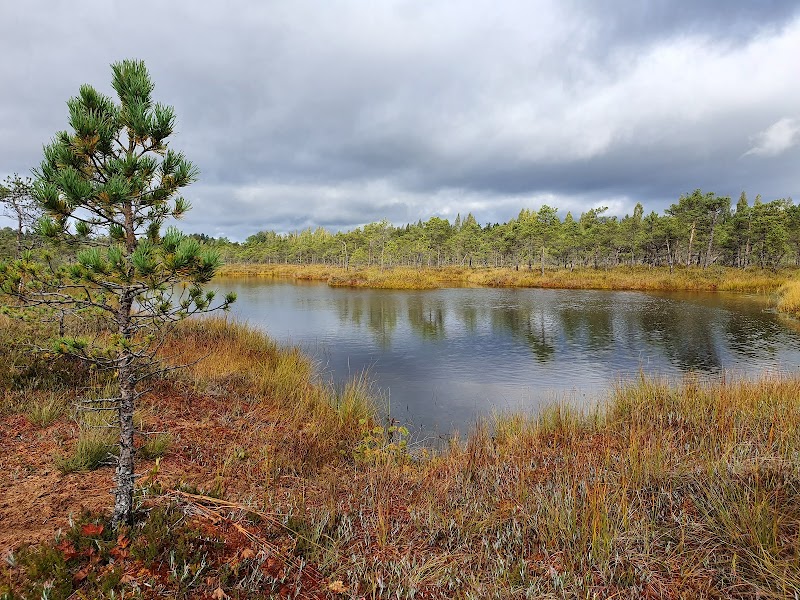Discover the rugged beauty of Gauja National Park on foot, where winding trails lead through whispering forests and past ancient castles near Cēsis. This guide prepares you for an adventure that blends wild landscapes with centuries-old cultural sights, perfect for hiking enthusiasts of all levels.
Pack Sturdy Footwear
The trails vary from packed dirt to rugged rock, often slippery after rain. Good hiking boots with solid tread will keep your footing secure.
Stay Hydrated and Filter Your Water
Bring at least two liters of water and a portable filter or purification tablets to use stream water safely throughout your hike.
Start Early for Better Weather
Summer afternoons in Gauja can bring sudden showers. Begin your hike early to avoid wet trails and maximize daylight.
Respect Wildlife and Historic Sites
Keep a safe distance from wildlife and avoid disturbing cultural relics like castle ruins to preserve Gauja’s natural and historical integrity.
Trailblazing Gauja: Hiking Through Latvia’s Wild Heart and Rich Heritage
Stretch your legs on the trails of Gauja National Park, the largest and oldest national park in Latvia, where nature shows no compromise and history whispers from the forest floor. Located near Cēsis in the Vidzeme region, this is a place where rivers dare your feet to follow, and ancient castles stand watch over valleys carved through millennia. The core hiking experience offers routes winding through dense pine and birch forests, alongside the rushing Gauja River, over rocky outcrops and sandy shores.
Start with the 12-kilometer Cēsis Loop Trail, a moderate hike with a total elevation gain of about 250 meters. Expect well-worn dirt paths mixed with rocky steps that demand good hiking boots to keep footing sure, especially after rain. The forest canopy both shelters and challenges you: sunlight filters unevenly, lighting up moss-covered stones and wildflowers that cling to edges. The air often carries a cool, earthy scent that seems to breathe alongside you, encouraging a steady pace.
As you advance, cultural relics appear—like the medieval ruins of Cēsis Castle, where stone walls coax imagination towards times when knights and traders passed through. Alongside, small wooden chapels and remnants of old trading routes remind you this wilderness has long been a crossroads of lives and stories.
Hydration is key: while small streams invite curiosity, filtered water or a good purification method is necessary. Start early in the day to dodge afternoon rain showers common in summer, and pack layered clothing to adapt to sudden weather changes—Gauja remains fiercely itself, unpredictable and alive.
For those seeking something more challenging, take the Ērgļu Cliffs trail, gaining 300 meters in elevation over roughly 8 kilometers. Sharp inclines lead to wide views of the winding Gauja River below, where the current seems to push onward, relentless and clear. When the wind picks up here, the trees respond with a low chorus, a reminder to keep a respectful distance from nature’s raw edge.
Planning your hike around spring and early summer offers floral bursts and migratory birds, while autumn cloaks the forest in fiery reds and golds—each season shapes the park’s character with its own pulse and palette. Just be prepared for slippery leaves in fall and slower trail conditions during wet weather.
Gauja National Park isn’t just a hike; it’s a measured conversation with wild terrain and living history. It invites curiosity, requires respect, and promises the satisfaction of discovery at every turn.
Nearby Trips
All Adventures
Boat Charters
Water Activities
Adventures near Cēsis
Discover the unique and memorable adventures that make Cēsis special.
Frequently Asked Questions
Are the Gauja trails well-marked for first-time hikers?
Most trails are clearly marked with signs and trail markers, especially around popular routes like the Cēsis Loop. However, carrying a detailed map or GPS device is recommended for less traveled paths.
Is it possible to combine hiking with visits to cultural sites?
Yes, trails pass several historic points such as Cēsis Castle ruins and old trading route landmarks, making it easy to blend natural exploration with cultural discovery.
What wildlife might I encounter on the trails?
Hikers often spot roe deer, foxes, and a variety of birds including woodpeckers and eagles. Early mornings or late afternoons are best for wildlife viewing.
Are there facilities like restrooms and water points along the trails?
Basic facilities are available near main trailheads and visitor centers, but restrooms and water sources are scarce on the trails, so come prepared with adequate supplies.
Can I hike in Gauja National Park year-round?
Yes, but trail conditions vary widely by season—from dry and dusty in summer to snow-covered in winter. Check local weather updates and trail accessibility before planning your hike.
How do I reach Gauja National Park from Riga or other major cities?
Cēsis, the nearest town, is about two hours’ drive from Riga by car or accessible via regional bus routes. From Cēsis, local transport or taxis can reach park entrances and trailheads.
Recommended Gear
Waterproof Hiking Boots
Protect your feet through rocky, wet, and muddy terrain ensuring comfort over long distances.
Layered Clothing
Allows adjustment to Gauja’s constantly changing weather, from cool under the canopy to warm in exposed areas.
Water Purification System
Necessity for safely drinking water sourced from streams during longer hikes.
Lightweight Rain Jacket
Sudden rainstorms demand breathable waterproof gear to stay dry without overheating.
Local Insights
Hidden Gems
- "Amata River Valley viewpoint — a quiet lookout offering sweeping views less visited by tourists."
- "Rauna Castle Hill — remnants of a medieval fortification surrounded by untouched forest paths."
Wildlife
- "European beavers creating dams along smaller streams, visible through their distinctive chewing marks."
- "Black storks nesting in remote forest areas during spring and summer."
History
"The region is rich in medieval heritage, reflecting centuries of Latvian and Livonian history with Cēsis Castle serving as a former stronghold of the Livonian Order."

